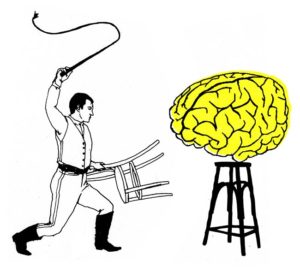Finding your Strengths
September 1, 2018 | Uncategorized | 2 Comments
This article explores the idea of finding your strengths as a way of increasing the depth and breadth of your capabilities. It considers two different perspectives of what a strength is, and provides some tools and resources to assist in identifying your strengths. These strengths can be utilised in dealing with adversity, and / or achieving optimum outcomes in your life.
 What is a strength
What is a strength
There are a wide variety of definitions. I consider a strength to be any asset or capability which can be used to solve problems, and achieve goals. Also anything that is a useful adaption in some circumstances. Capabilities such as reflection and procrastination are examples of capabilities which are useful in some cases, and not in others. Discerning when something is useful or not is the topic of another article.
Counselling / Social Work perspective
Within the counselling and social work community there is a framework called Strengths Based. The idea is that clients who are struggling with historical or current issues tend to only see the world as containing problems. They can often see themselves as having little or no power in their life. A Strengths Based approach validates their struggles, and more importantly their ability to survive in difficult circumstances. The therapist working with the client in unpacking their story will attempt to identify strengths that the client possesses. From my own experience as a therapist there are always some. For some people still being alive in spite of horrific life experiences is a strength.
Positive Psychology Perspective
From a positive psychology perspective, the purpose of identifying individual strengths is to then focus on utilising them. Focusing on strengths results in enhanced well being and experiencing more positive emotions. Research suggests it is also protective against mental health symptoms.
Identifying Strengths
When attempting to find our strengths, we will often identify our strengths as things that have been named by others. If people say we are funny, smart, kind, tenacious etc, then we will identify with these. Or inner qualities that we feel have made a clear contribution to a particular achievement we are proud of. This makes sense but can be somewhat limiting as it starts to narrow our personal inventory of strengths. I am suggesting that doing a broader sweep of our life might reveal additional qualities which can increase our perceived overall capabilities. It may even allow us to expand our life choices.
Some tips and resources for finding your strengths
In digging for the less obvious, but somewhat hidden strengths, some things to consider are:
· Difficult circumstances you have survived or are even currently surviving in . Things such as financial or health stress, loss of loved one to name a few.
· Things that you have done which were outside your normal range of activities and / or situations. Maybe you consider yourself a passive person, but you have had to advocate. Maybe you are very outcome focussed, but found yourself in a situation which you just had to accept.
· If you are still struggling an excellent resource is the VIA Character Strength’s Inventory. Some people use this as a way of only identifying their top strengths to focus on in order to maximise their potential which can be useful. I suggest using it to identify the diversity of strengths you have. When reviewing the report, consider all of the strengths you have as potential resources.
In finishing…
We all possess many capabilities and resources which can be utilised in dealing with life situations, and / or enhancing our lives. Looking at our life through the lens of strengths enable us to validate the resources and capabilities already in our possession. If we take an inclusive approach to developing a strengths inventory, it enables us to have a broader definition of ourselves, and what we are capable of.
I encourage you to start the journey of finding your strengths.
As always, any comments or experiences related to this article are appreciated.
 Hope is seen by some as something that gets you through a tough time which is imposed on you by outside circumstances where there is little you can do. There is some truth to this, but equally hope is something that motivates and can counterbalance fear of failure to
Hope is seen by some as something that gets you through a tough time which is imposed on you by outside circumstances where there is little you can do. There is some truth to this, but equally hope is something that motivates and can counterbalance fear of failure to  I have previously written about some of success’s biggest obstacles;
I have previously written about some of success’s biggest obstacles;  One aspect of identity is self-schemas. The self-schema is a psychological term which refers to a long lasting and stable set of memories that describe a person’s beliefs, experiences and generalizations about the self, in specific areas of life. These areas include relationships, work, socially, study etc. A person may have a self-schema based on any aspect of himself or herself as a person, including physical characteristics, personality traits and interests, as long as they consider that aspect of their self important to their own self-definition.
One aspect of identity is self-schemas. The self-schema is a psychological term which refers to a long lasting and stable set of memories that describe a person’s beliefs, experiences and generalizations about the self, in specific areas of life. These areas include relationships, work, socially, study etc. A person may have a self-schema based on any aspect of himself or herself as a person, including physical characteristics, personality traits and interests, as long as they consider that aspect of their self important to their own self-definition. Failure is the state or condition of not meeting a desirable or intended objective. It can also by considered as the opposite of success. From a psychological perspective there is as construct called Fear of Failure and it is considered an avoidance orientated achievement motive. In non-psychology terms this means it creates a reason to avoid embarking on activities which would lead to the achievement of goals.
Failure is the state or condition of not meeting a desirable or intended objective. It can also by considered as the opposite of success. From a psychological perspective there is as construct called Fear of Failure and it is considered an avoidance orientated achievement motive. In non-psychology terms this means it creates a reason to avoid embarking on activities which would lead to the achievement of goals. Cognitive psychology is a field of psychology that is still maturing. It attempts to take a more systems based approach to the processes of the mind. Having come from an Information Technology background I have a strong preference for this approach. Unfortunately, the accuracy of any theory is fraught with error, as unlike with computer hardware which is designed by a human being, the brain was not. Therefore a lot of assumptions tend to be made about the inner workings of the brain. Whilst cognitive psychology is a science, theories are still prone to changing.
Cognitive psychology is a field of psychology that is still maturing. It attempts to take a more systems based approach to the processes of the mind. Having come from an Information Technology background I have a strong preference for this approach. Unfortunately, the accuracy of any theory is fraught with error, as unlike with computer hardware which is designed by a human being, the brain was not. Therefore a lot of assumptions tend to be made about the inner workings of the brain. Whilst cognitive psychology is a science, theories are still prone to changing. No this isn’t a misquote. Understanding and responding to your desire to procrastinate can result in your being able to spend less time on procrastinating and more time on the task you have been avoiding. Like
No this isn’t a misquote. Understanding and responding to your desire to procrastinate can result in your being able to spend less time on procrastinating and more time on the task you have been avoiding. Like 


